Programmes Living Pictures Revived Unknown Persons
The better known and lesser known Zagreb people – persons from everyday life and those important for having had a hand in watershed events in Zagreb from the earliest history to the present day that are presented in the project Living Pictures.

The monastery of the Order of St Paul the Hermit in Remete was founded in 1272 when members of the order, the Paulists, chose an abode for themselves in the valley of the Kaptol Forest and from the word eremites derived the place name Remete. At the beginning of the 14th century a church was built in honour of the Assumption, and since that time it has been known as the Church of Our Lady of Remete.
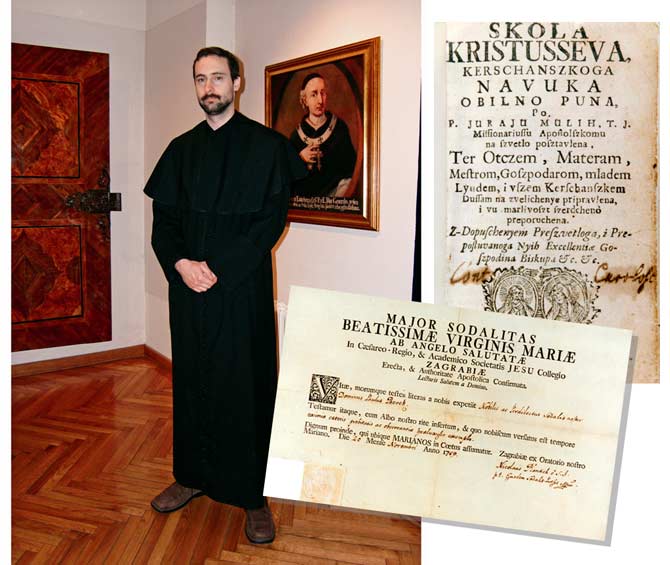
A member of the Society of Jesus, a Jesuit, tutored several hundred students in the first high school to be opened in Croatia, in 1607, in Gradec, Zagreb. He also taught exemplary behaviour. When in 1744 a short catechism for youth with “known rules” of upbringing and conduct of young people was published, the young could be educated at home simply with a book.

Lion of St Mark, symbol of the titular saint of the Parish Church of St Mark, Gradec.

School children of the Real High School at Grič on the western part of the South Promenade took a drawing course run by the well-known Zagreb painter Dragutin Stark in 1862.

The rider of a boneshaker bicycle, because of its wooden wheels, after which the bicycle got its name, certainly “felt the ride” on the uneven thoroughfares. The rider of this boneshaker bike was among the first to try riding with extra pedals for the front wheel, around 1870.
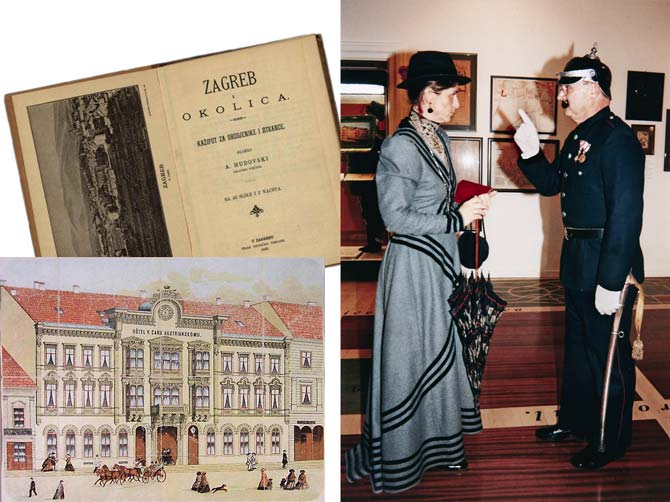
Public peace and order were ensured by a City Watchman, who was also kindly at the service of the Travelling Lady who arrived by train from Budapest at the newly opened Main Railway Station, commissioned on July 1, 1892, in the presence of Mayor Mošinski. Luckily, that same year, the first tourist book of Zagreb was published Guide to Natives and Foreigners providing all the information necessary for a visit to the town. A horse tram was running, but because of her many items of baggage, the lady found it more convenient to take a fiacre to her hotel At the Austrian Emperor’s in Ilica.

According to regulations, a postman had to use a post horn; it was used to announce the arrival of heralds and travellers in the mail coach, so that the population of the area through which the post passed could hear its coming and bring their consignments. The horn also announced the departure of the coach and the assembly of travellers. At the sound of the post horn, all the traffic on the road had to move to the side to allow the mail rider and the mail coach, which from the 20th century became the mail car.
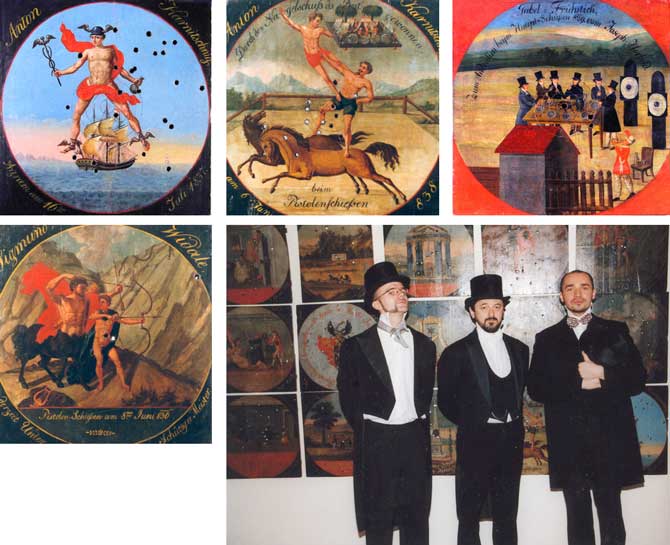
Distinguished people in Zagreb tended to be members of the Civil Shooting Association. In the society house built at Tuškanac, during the 19th century, many competitions were held, as well as entertainments with dancing and prize draws. Winners at the shooting competitions would win as prizes the targets, which were painted with symbolic scenes connected with the occupation of the winner or the donor of the award. They were hung upon the walls of the grand hall of the Shooting Range.

Ilica had always had the reputation of being the main shopping street, full of picturesque shops that offered the most select goods. At any time of the day the mass of passers-by would create a great bustle, together with the traffic of fiacres and trams. The couple walking with a pram had to step up their pace to arrive as soon as they could in the peace, cool and greenery of Zrinski square.
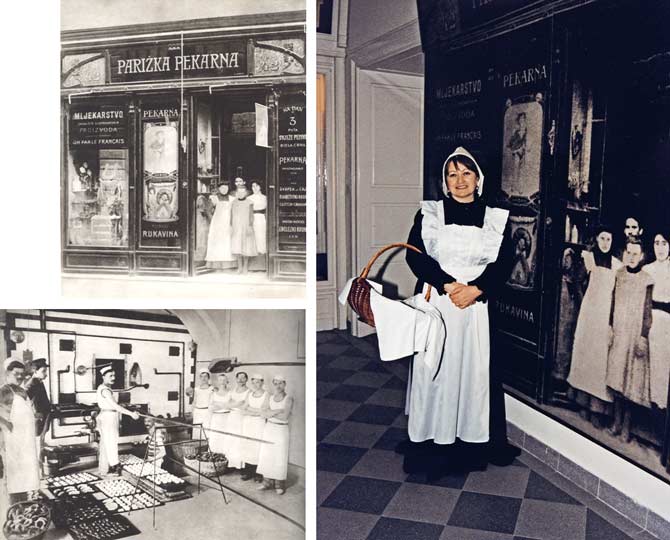
A salesgirl at Rukavina’s at Ilica 42 offered her customers all kinds of fine bread and rolls from the best flour as well as doughnuts at carnival-tide.
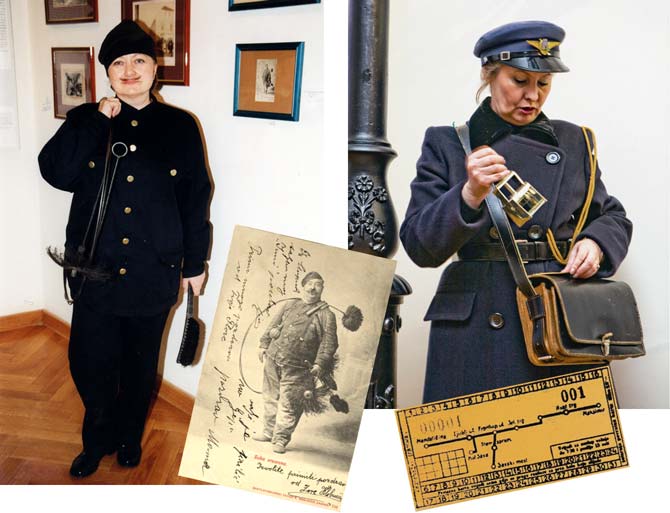
Typically male occupations gradually found their ways into female hands. In Zagreb about 1870 Uršula Wolf became the first woman chimney-sweep, Paula Landsky was the first conductor of the Zagreb Electric Tram, in 1911. The chimney sweep had to clean the chimneys before winter, and a picture of a sweep on greetings cards would bring luck for Christmas and New Year.

Societies marked the life of Zagreb at the end of the 19th century, and the founding of the gym society, Croatian Sokol (Hawk) in 1874 made sport so popular that it soon became part of the everyday life of the city. The Sokol member in gym strip took part in the exercises at the 1st Cro. All-Sokol Jamboree in 1906 at the Jamboree Site in what is today Martićeva street.
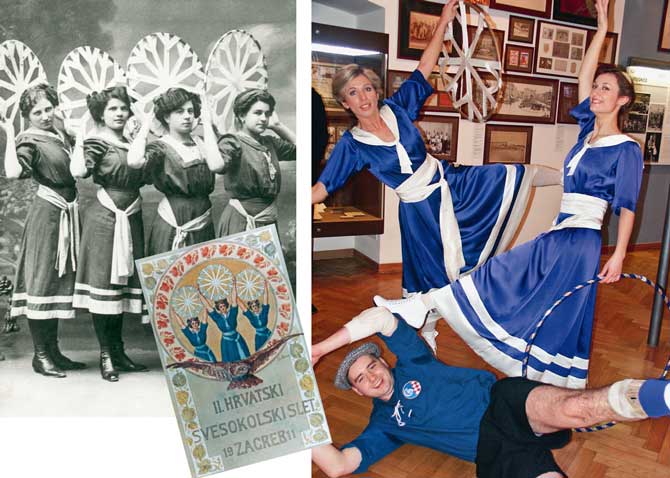
During the holding of the 2nd All-Cro. Jamboree in 1911, much noticed was the exercise of girl Sokols with hoops, which appeared on a postcard in colour. During this event (slet) the song Sletovka was created, composed by Ivan pl. Zajc to words by Stjepan Širola.
The footballer, a goalkeeper, a high school boy, was a member of the secondary school sports club Concordia, founded in 1906. It played at the Elipsa field, belonging to the Real High School.
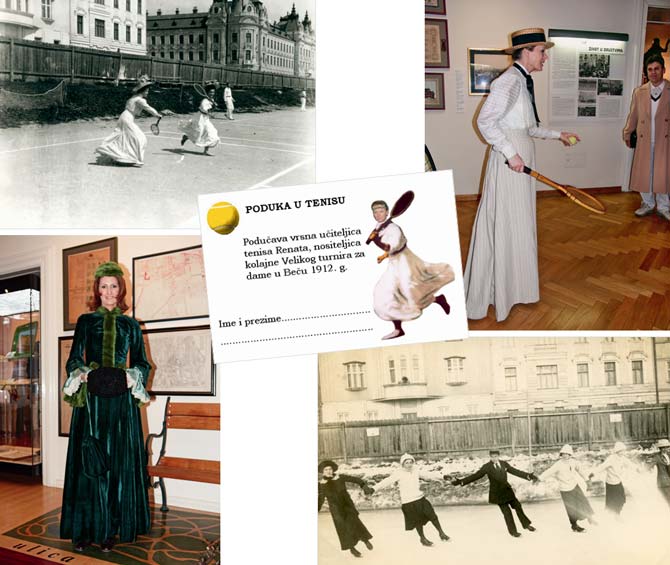
At the grounds of the First Cro. Skating Society, laid out in 1906 in Mihanovićeva street, in winter and summer there was a jolly atmosphere. In winter the grounds were occupied by skaters, while in the summer the grounds were put to use for tennis. The skating girl skated on her own or in a couple holding a young man by the arm, and the girl tennis player was adroit at playing with her wooden racquet; she was not bothered by her long dress.

At the end of the first decade of the 20th century there were four full-time cinemas in Zagreb: the first was the Union, then the Edison, the Charitable Cinema of the Cyril and Methodius Masons in the hall of the Novogradiška brewery (today the Europa) and the Apollo in Ilica 31, the first purpose-built cinema. With their programmes the cinemas attracted large audiences, and the contents of the films that were shown (silent, with live music) were advertised by the young lady who handed out film announcements.

A nurse cared for the wounded who came back from the battlefields of the 1st World War; because of the great number of wounded, schools too were turned into hospitals (the School for Girls in Draškovićeva street). The Committee of Zagreb Ladies and the Red Cross also took care of the war-wounded.
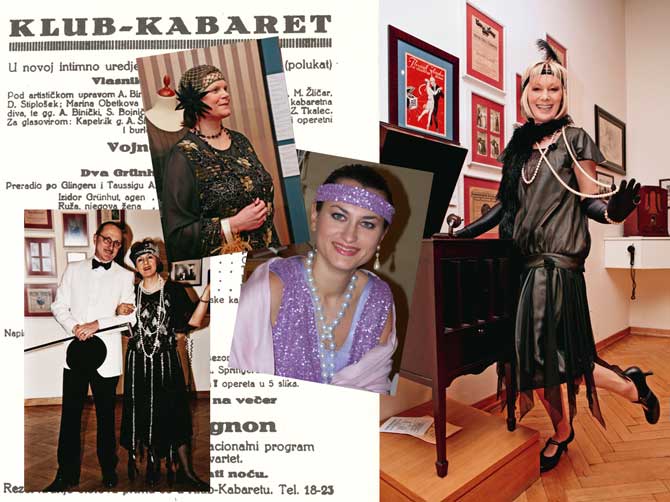
The Roaring Twenties in Zagreb offered the most roaring of good times in the Klub-Kabaret in Ilica 11, first floor. The audience was entertained with jokes, new hits, the charleston and jazz for dancing, while in the 1925 season, the biggest hit was Miss Obetkova, the Czech Marina Obetkova, a charming songstress, a vamp of the cabaret, who took Zagreb by storm. The dandy in the white dinner jacket wondered: How could people possibly be bored in a cabaret?

A newspaper seller of the editions of Tipografija, Obzor, Jutarnji list and Večer, could sell papers on the street, as approved by the Press Law. Although Obzor had the lowest circulation, this printing house retained the tradition of being the leading national daily, oriented to the arts.
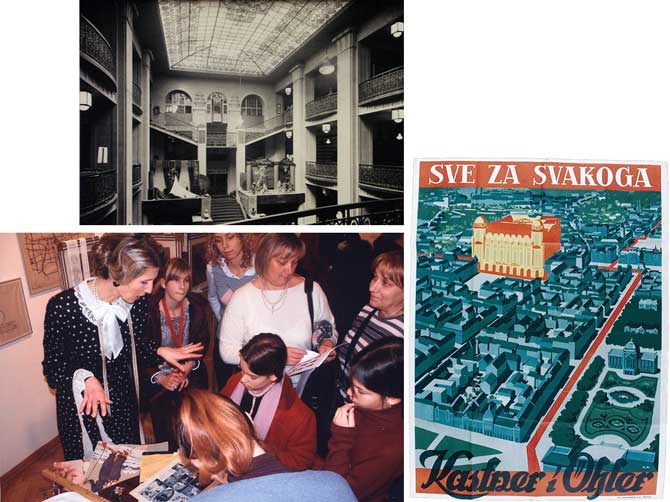
Salesgirl in the Kastner & Öhler department store was polite in her behaviour with the customers, in line with the slogan of the store, Everything for Everyone, 1932. She advertised credit sales and special opportunities with cut price goods. The same thing could be ordered by catalogue, COD, but it was important in the purchase of clothing to pay strict attention to instructions for taking the measurements.

A lady hiker on Sljeme had to have the right accoutrements: hiking costume, stick, haversack, hiking association badge (the association was founded in 1874) and a tin sandwich box.

Zagreb women at the (so-called) Babinjak bathing place on the Sava constantly posed for the schnell photographer, and entered for beauty contests. The city bathing place on the Sava, officially opened in 1926, meant rest and recreation in the new summer season for 5,000 visitors. The prices were reasonable: every two hours cost 2 dinars, a cabin (guarded) cost 4 dinars, and a locker 2 dinars.

An artiste in wartime Zagreb would often perform Lili Marleen, the most popular soldiers’ song in World War II, for groups of soldiers and their girls. The music was printed in Zagreb in 1941, and the original German words of Hans Leip were translated into Croatian by Norbert Neugebauer. Not only did the Axis but also the Allied forces happily listen to it, and a version with the new title of A little leisure was published in the Partisan army press for the purposes of the anti-fascist army in Croatia.
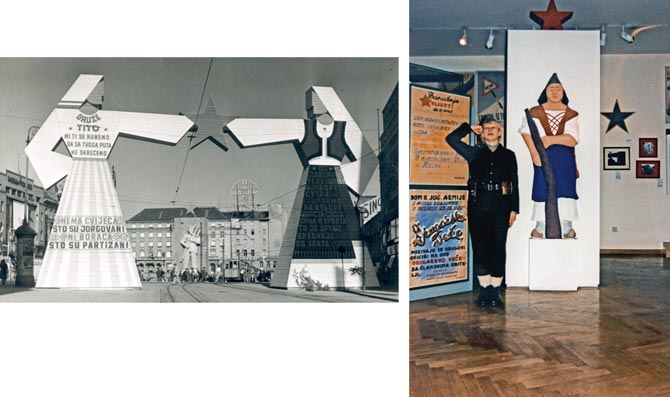
The Partisan woman who arrived in Zagreb as delegate to the 1st Anti-Fascist Women’s conference on July 21-23, 1945, had her photo taken by the backdrop that decorated Republic Square to mark the conference and yet actually served to mask the monument to Ban Jelačić.

Brankica the Pioneer got the task of looking after Tito’s baton with letter from her Seven Secretaries of SKOJ (Communist Youth Organisation) Elementary School, and was an active member in the Pioneer organisation. Pioneer Nada too handed out booklets to new members of the organisation of Pioneers (socialist children’s organisation).
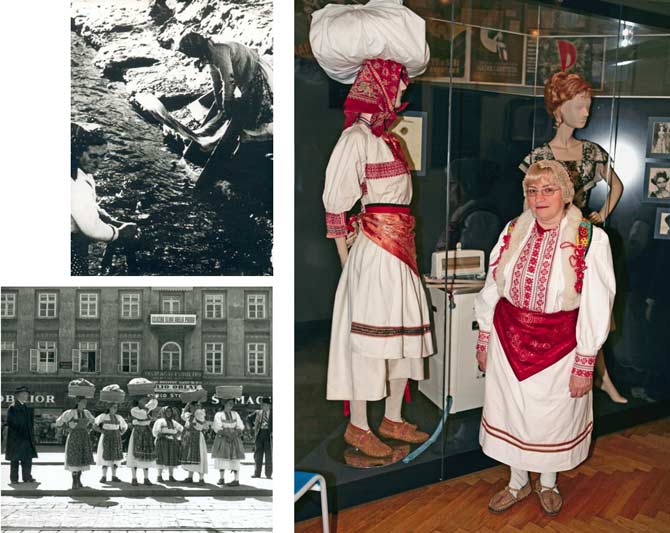
The laundresses of Šestine washed clothes for the ladies of Zagreb until the first washing machine appeared on the Yugoslav market – the Rondo Maris, produced in Maribor in 1957. Until the 1960s, washing was done in Šestine in the Bliznec brook. The laundry would be brought back clean in carts to Lang Square, from which the village woman took it in bundles on their heads to the homes of the burghers.
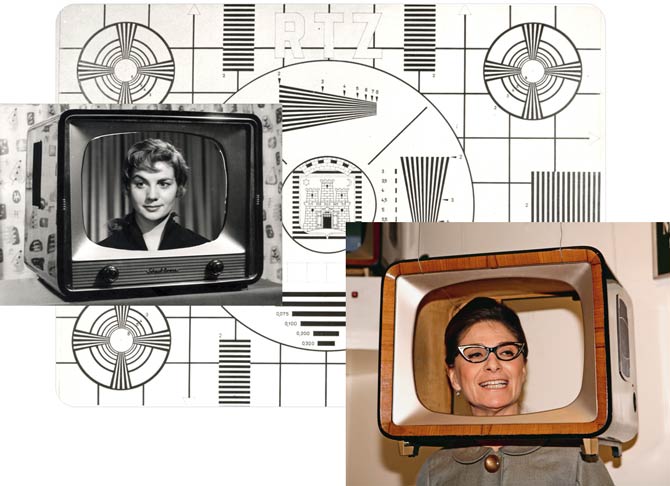
An announcer of RadioTelevision Zagreb, which started broadcasting in 1956, with a direct transmission of the opening of the Zagreb Fair. Since there were so few TVs, the programme was watched in the streets, where sets were placed in shop windows. Black and white dominated the screen for 20 years, and then broadcasts in colour were shown.

Red Riding Hood and Luka the Hunter are figures from the old fairy story the most popular version of which was written by the Brothers Grimm in the 19th century. In Zagreb, in 1954, the Red Riding Hood, the first domestic colour cartoon was shot, the animators being Nikola Kostelac and Aleksandar Marks.

Professor Balthazar is the main character of the cartoon film of the same name. The likeable scientist character who solved all the problems of his citizens in Balthazar-city with his inventions was created by Zlatko Grgić, and his name was given by Pavao Štalter, an animation artist of the Zagreb Cartoon School. The figure of Professor Balthazar embodies the typical features of old-style professors of the Zagreb style, polite, lost in thought, but creative and inventive, well intentioned and kind, and always ready to help. The animated series about Balthazar was produced from 1967 to 1971, and a total of 57 episodes were made. It has remained the most successful product of the Zagreb Cartoon School.
Željka Kolveshi
photo Miljenko Gregl
design Maja Šojat-Bikić, MSc

